Think about an area in your garden where you most enjoy the beauty of flowering plants. Now imagine bringing that favorite piece of your garden indoors as a bouquet. You may be surprised to find that the combinations composed of many of your favorite flowering shrubs, perennials, vines and even trees can be used to create a lovely tabletop bouquet — and even inspire the next season's plantings.
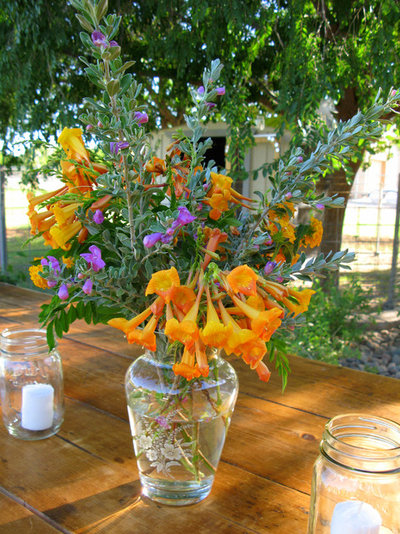
Noelle Johnson Landscape Consulting
Creating a bouquet isn't difficult. In fact, it can be as simple as filling a vase with the stems from a single flowering shrub. Or try pairing flowering shrubs with perennials and vines. Whether your bouquet is made from a single type of plant or several, there are countless possibilities.
The purple blooms of
Texas ranger (
Leucophyllum frutescens)
make a great pairing with the orange flowers of
orange jubilee (
Tecoma x 'Orange Jubilee')
.
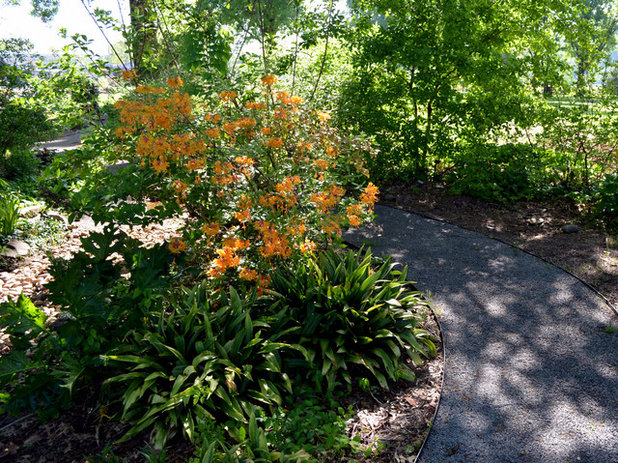
Noelle Johnson Landscape Consulting
Choosing the Right PlantsYou may be surprised to find that many of the existing flowering shrubs, perennials, vines and trees in your garden are suitable for creating a garden bouquet.
Shown: Honeysuckle
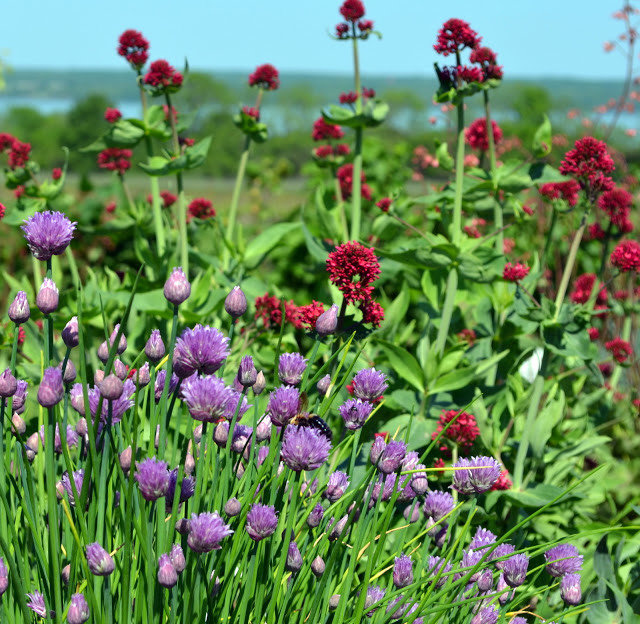
Noelle Johnson Landscape Consulting
Your garden may be filled with flowering plants, but how do you know if they will hold up in a bouquet without wilting right away?
The easiest way to determine if a plant can be used in a bouquet is to cut a stem or two, put them in water and see how they hold up. If the flowers wilt or droop right away, then they won't make a good bouquet. Ideally, they will last at least 24 hours.
The red flowers of
Jupiter's beard (
Centranthus ruber)
form the perfect backdrop for the purple flowers of
chives (
Allium schoenoprasum), both of which can be used to create a bouquet.
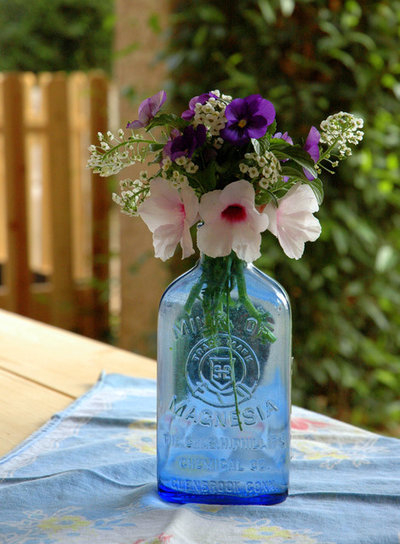
Noelle Johnson Landscape Consulting
Garden bouquets usually don't last as long as those bought from a florist, but they are a creative and unique expression of your garden.
Here a small bouquet includes flowering annuals
violas and alyssum, paired with the pale pink flowers of
pink bower vine (
Pandorea jasminoides)
.
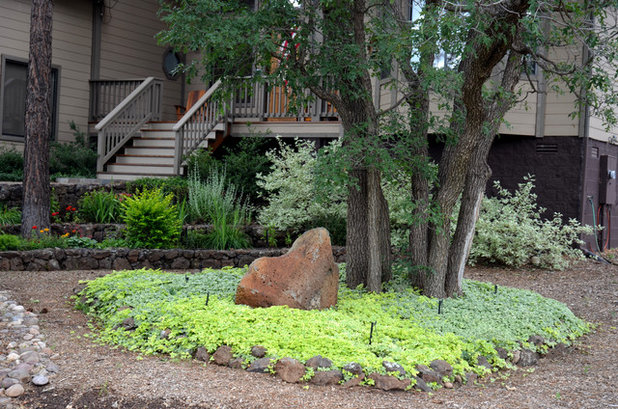
Noelle Johnson Landscape Consulting
Don't limit yourself to flowering plants. Plants with colorful foliage or interesting shapes and textures can make great additions to a garden bouquet.
English ivy (
Hedera helix)
looks great when added to a floral bouquet, as it will drape down the sides of the vase. The large leaves of
hosta can be used to create a beautiful backdrop for flowering plants.
As the seasons change, so will your garden bouquets, as different plants peak in your garden. Once the weather begins to cool and the flowers begin to fade, you can create a bouquet without flowers, using seed pods from your favorite trees instead. Seed pods from trees such as
jacaranda (
Jacaranda mimosifolia),
screwbean acacia (
Prosopis pubescens),
sweet gum (
Liquidambar styraciflua)
and
tulip poplar (
Liriodendron tulipifera)
can be used to create a uniquely lovely and seasonal bouquet.
Shown: Variegated English ivy
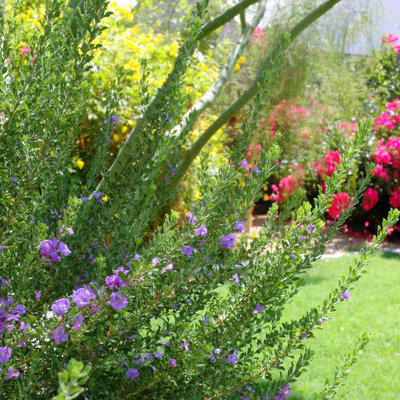
Noelle Johnson Landscape Consulting
Arranging Your Garden Bouquet
Look to the garden. You don't have to be a floral designer to figure out how to arrange flowers. For inspiration on what plants to use in your bouquet, look at how the plants are arranged in your garden. Note which plants look good together and try to mirror the same arrangement in a bouquet.
An easy way to get started is to use a combination of three plants: a taller flowering plant, such as a shrub, paired with a medium-height perennial and a low-growing ground cover.
Place the taller branches or stems toward the back or center of your bouquet and then add the remaining plants in order of height, finishing with the shortest plant, just like in the landscape.
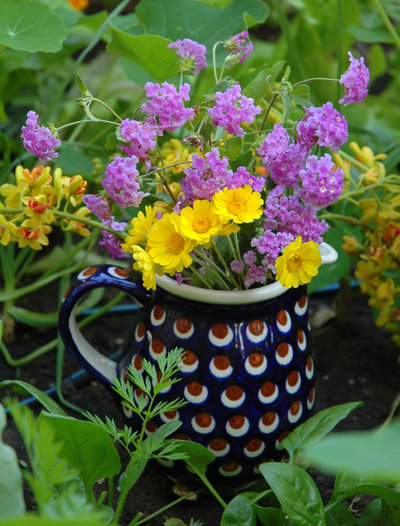
Noelle Johnson Landscape Consulting
Use the color wheel. Look to the garden for ideas about which colors look good together. Using a color wheel can also help you determine which colors look good when combined. Group cool colors, like purple, pink and white, for a lovely bouquet. Or, if you prefer warmer colors, use plants with red, orange or yellow flowers. For a striking color contrast, pair flowering plants with cool colors with those that have warm colors.
In the bouquet shown here, the contrasting colors of
purple trailing lantana (
Lantana montevidensis)
, yellow
Desert Marigold (
Baileya multiradiata)
and yellow-orange
Cascalote tree (
Caesalpinia cacalaco) flowers make an attractive combination.
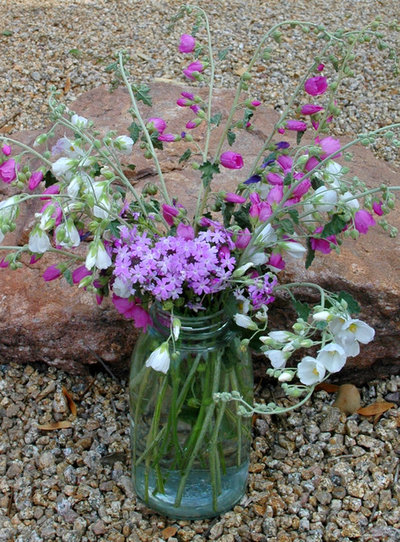
Noelle Johnson Landscape Consulting
Bouquets created from the garden tend to be loose and unstructured, attractive in their simplicity.
The white and pink flowers of globe mallow
(
Sphaeralcea ambigua) form the perfect backdrop for the lavender flowers of
Goodding's verbena (
Glandularia gooddingii)
in front here.
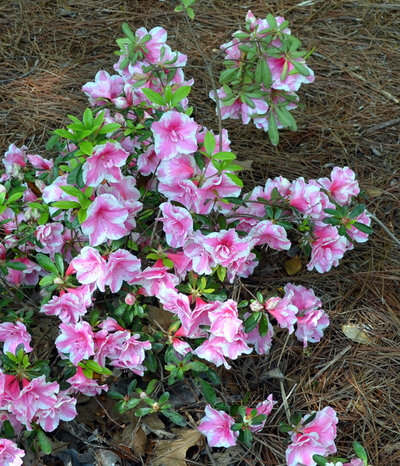
Noelle Johnson Landscape Consulting
A single type of flower can make a lovely arrangement. Bouquets can be large or small depending on which plants and containers you use, from a large vase filled with
azaleas to a small glass bottle with a bunch of
violas.
Shown: Azaleas
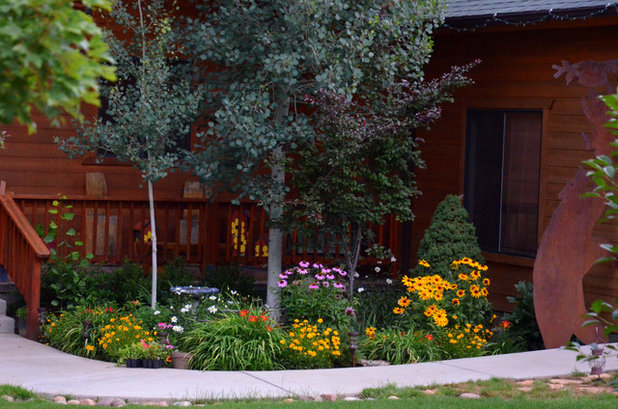
Noelle Johnson Landscape Consulting
Planting Your Own Bouquet GardenWhat if you don't have a garden filled with flowering plants suitable for a bouquet? Go ahead and plant your own bouquet garden.
Here are some popular flowering plants that grow in a variety of climates and will enhance your outdoor garden as well as beautify your home when made into bouquets:
- Azalea
- Bleeding heart
- Buddleia
- Clematis
- Coneflower
- Coreopsis
- Crape myrtle
- Forsythia
- Honeysuckle
- Lantana
- Lavender
- Pincushion flower
- Rhododendron
- Rudbeckia
- Salvia sp
- Trumpet vine
Of course, these are just a few plants that can be brought indoors to create garden bouquets. Browse the Houzz flowers section for more ideas.
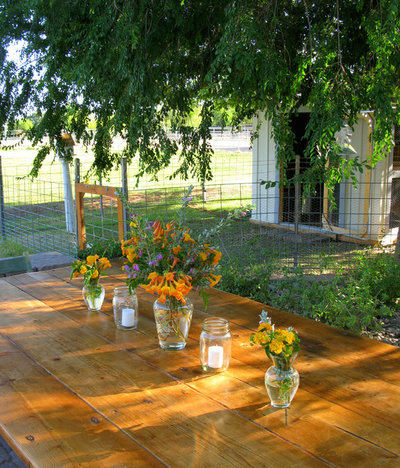
Noelle Johnson Landscape Consulting
When deciding which plants to add to your bouquet garden, choose those that will have overlapping bloom periods so that you can create bouquets throughout most of the year. Incorporate a mix of flowering shrubs, perennials and vines. Soon you will have not only a beautiful garden outside, but one that will allow you to bring the beauty of the garden indoors.
More: How to Make Beautifully Untamed Floral Arrangements





